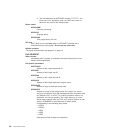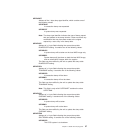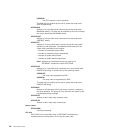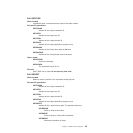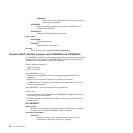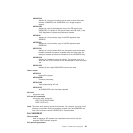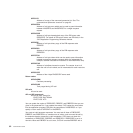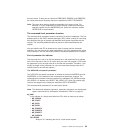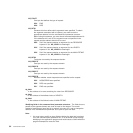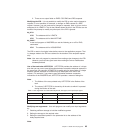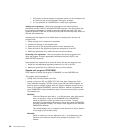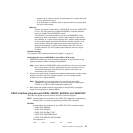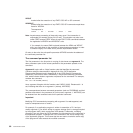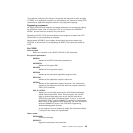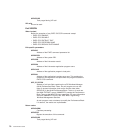non-zero value. To help you set values for EIBRCODE, EIBRESP, and EIBRESP2,
the values used by the enqueue domain are specified in DSECT DFHNQUED.
Note: Take care when issuing recursive commands not to cause a loop. For
example, it is your responsibility to avoid entering a loop when issuing an
enqueue request from the XNQEREQC exit. Use of the recursion counter
UEPRECUR is recommended.
The command-level parameter structure
The command-level parameter structure consists of a series of addresses. The first
address points to the EXEC interface descriptor (EID), which consists of a bit string
that describes the type of request and identifies each keyword specified with the
request. The remaining addresses point to pieces of data associated with the
request.
You can examine the EID to determine the type of request and the keywords
specified. You can examine the other parameters in the list to determine the values
of the keywords. You can also modify values of keywords specified on the request.
End of parameter list indicator
The high-order bit is set on in the last address set in the parameter list to indicate
that it is the last one in the list. On return from your user exit program, CICS scans
the parameter list for the high-order bit to find the last parameter. Therefore, if you
modify the length of the parameter list, you must also reset the high-order bit to
indicate which is the new last address.
The UEPCLPS exit-specific parameter:
The UEPCLPS exit-specific parameter is included in both exit XNQEREQ and exit
XNQEREQC. It is the address of the command-level parameter structure. The
command-level parameter structure contains four addresses, NQ_ADDR0 through
NQ_ADDR3. It is defined in the DSECT NQ_ADDR_LIST, which you should copy
into your exit program by including the statement COPY DFHNQUED.
The command-level parameter list is made up as follows.
Note: The relationship between arguments, keywords, data types, and input/output
types is summarized for the enqueue commands in Table 3 on page 65.
NQ_ADDR0
is the address of a 9-byte area called the EID, which is made up as follows:
v NQ_GROUP
v NQ_FUNCT
v NQ_BITS1
v NQ_BITS2
v NQ_EIDOPT5
v NQ_EIDOPT6
v NQ_EIDOPT7
v NQ_EIDOPT8
NQ_GROUP
Always X'12', indicating that this is a task control request.
Chapter 1. Global user exit programs 63




